15+ Excellent Margarine Substitutes
When you buy through our links, The Breslin may earn an affiliate commission. Learn more
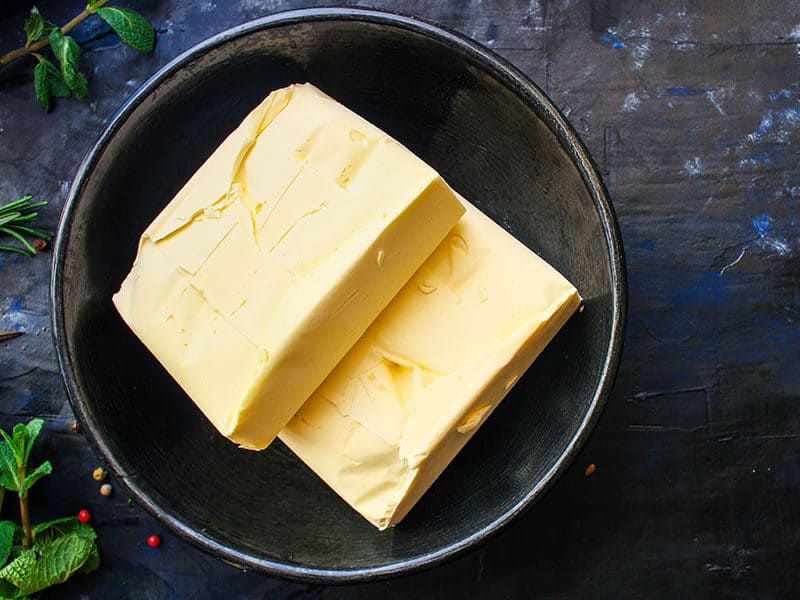
Margarine substitutes is a hot searching keyword for lots of people in recent times. For various reasons, many are looking for ways to cut margarine out of their diet.
However, it’s easy to get lost in the ocean of search results and end up with a bunch of useless information.
Well, the good news is, if you’re looking for excellent alternatives to margarine, you’ve come to the right place. Keep reading to find the best answer to this question and save your precious time!
Margarine 101 – Basic Info About Margarine
Margarine is a vegetable oil-based spread that is often used in place of butter in cooking, baking, or flavoring.
Traditionally, margarine is made from extracting and refining beef fat; however, due to an animal fat supply shortage in the 1940s, most manufacturers have switched to vegetable oils ever since.(1)
Although margarine is milder and not as creamy as butter in terms of flavor, it is exceptional at absorbing other flavors. This characteristic makes margarine an extremely versatile ingredient that can be used in making pastries, bread, sauteing, and frying.
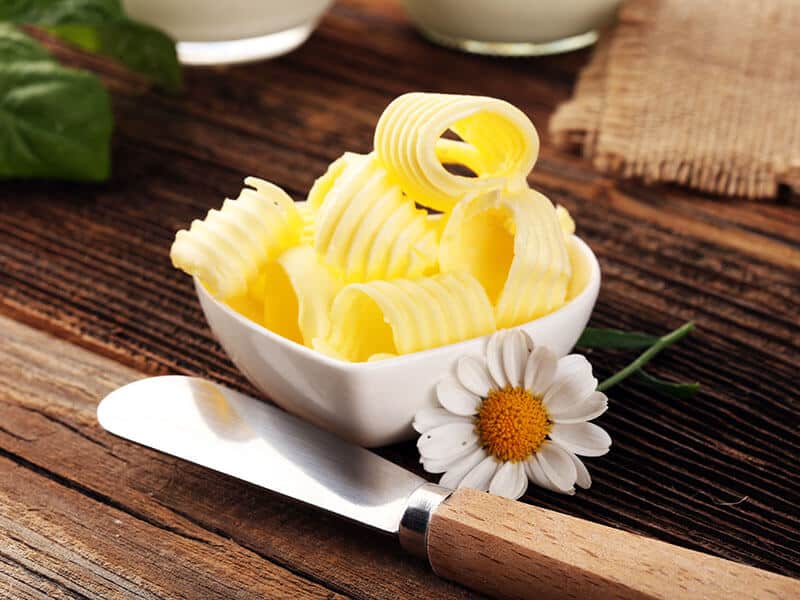
“Why would I want to use margarine if I can just use butter instead?” you might ask. While it is true that butter has a more robust flavor and has long been a staple ingredient in baking, there are still several reasons why plenty of people choose margarine over butter.
The first reason for margarine’s popularity is price. Thanks to low production costs, margarine can be sold at a lower price than butter which makes it a perfect choice for industrial production and people with lower income.
Moreover, margarine offers a great butter alternative for vegetarians, lactose-intolerant people, and people that aren’t allowed to eat animal-based products due to religious reasons.
In terms of health impact, margarine has a high content of polyunsaturated fat, which has been proven to reduce the risk of heart-related problems. It also contains 0 cholesterol and can even help to reduce “bad” cholesterol. (2)
Finally, many just prefer the taste of margarine to butter in some dishes. Butter and baked sweet food such as cookies and cakes are certainly a match made in heaven. However, margarine fits nicely in savory dishes that don’t require the richness of butter.
You can see this video to know more:
I think that covers everything you need to know about margarine. Without further ado, let’s get to the real reason why you are here: the best margarine substitutes on the market.
17 Best Margarine Substitutes That Money Can Buy
In this part, I’ll give you 17 options for your margarine alternatives. All of them are solid choices. However, some will fit better in particular kinds of recipes.
Keep reading to find out which one is the best choice for your next meal!
Butter

Butter is the obvious first choice when it comes to margarine replacement. In fact, lots of modern margarine is made to taste similarly to butter.
Creamy, rich, soft with a slight trace of sweetness, butter is the perfect choice for baking and spreading. It also works great as a condiment when melted or used in frying food and making sauces.
However, because butter is a dairy product, it’s a no-go for people who are lactose intolerant. In addition, since butter is fairly high in fat content and calories, it’s best to keep your butter consumption in check.
You can use 1 cup of butter in place of 1 cup of margarine.
Olive Oil

Olive oil is known to be a healthy ingredient with rich antioxidants and beneficial fats content. Not only that, but it also makes a great alternative for margarine.
The taste of olive oil can vary depending on the variant. In general, all variants have the same distinctively bold, grassy, and herbal flavor that is really hard to miss.
Olive oil shines best when used in baking cookies, cake, or herbal-tasting bread. However, due to its strong taste that always seems to linger around, some people aren’t really fond of olive oil in sweet baked goods.
If you choose to replace margarine with olive oil, do so in a 3:4 proportion. In other words, about ¾ cup of olive oil should suffice for 1 cup of margarine.
Cream Cheese
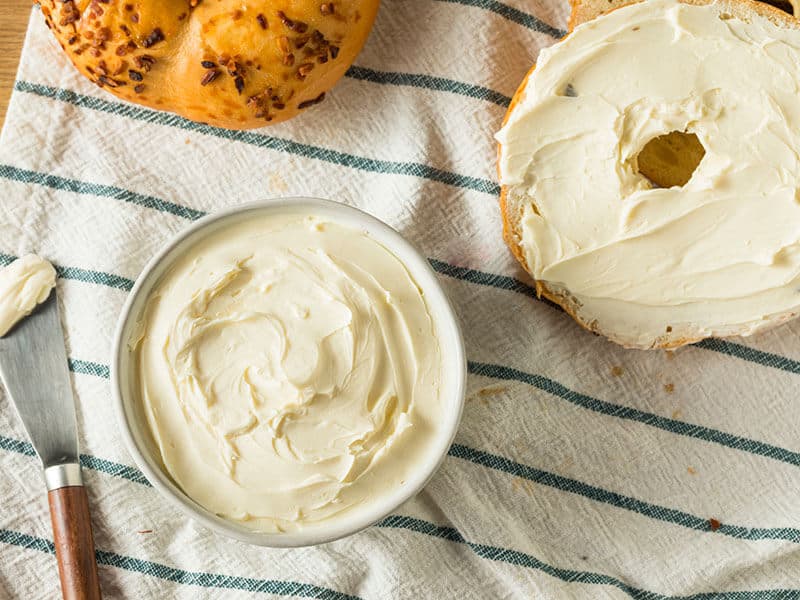
Cream cheese is a low-fat substitute for margarine in baking recipes. It typically has a mild taste and soft, fluffy texture. That said, because there are multiple types of cream cheese, you might find some that are sweeter or taste more herbal than the others.
While some people love cream cheese in baked goods because of its unique flavor, others might find the result a bit stiffer than they’d like. In some cases, the difference in fat content can also affect the taste.
For this reason, I’d recommend using full-fat cream cheese or reduced-fat cream cheese (in case you’re trying to lose weight). And don’t forget to melt or soften the cheese first before using it. In addition, you can also use cream cheese as a spread for bagels or crackers.
For cream cheese, simply replace it with margarine in a 1:1 ratio.
Lard
In recent years, fat products such as lard and shortening have gotten a lot of undeserved hate for being unhealthy. That said, the nutritional value tells a different story.

This semi-solid ingredient is not only rich in monounsaturated fats (a.k.a the good fats) but also contains less saturated fat (the bad fats) than butter. So it’s really not that bad!
If you don’t have any problem with animal fat-based products, then lard is a solid option for replacing margarine since they both play a similar role in most recipes. Additionally, because lard is neutral in taste, it won’t cause any flavor change in your dishes.
Add lard to your baking recipes, and you will be surprised by how light and flaky the results are. In addition, lard also finds its uses in frying and roasting recipes.
For lard, you’ll need to use a bit less than the required amount of margarine. For 1 cup of margarine, opt for ¾ cup of lard.
Lard is not as bad for your body as many people assume. Still not convinced? Here’s proof.
Ricotta Cheese
In Italian, ricotta means “recooked” and that is exactly how this cheese was traditionally made. At the beginning, ricotta cheese was made from whey of milk (a.k.a the left behind liquid of the cheese making process) as a way to save the leftovers from going to waste.
However, in modern days, people also make ricotta cheese from whole milk.
This fresh cheese is creamy, smooth, and light in texture, while the taste can vary from sweet to a little bitter, or salty depending on its age.
You can use ricotta as a spread or in some baked dishes in lieu of margarine. There’s also a low-fat version of ricotta cheese if you want to cut some fat out of your diet.
For ricotta cheese, you can use the same amount as you would typically use margarine.
Have about an hour at hand? How about some homemade ricotta cheese.
Coconut Oil
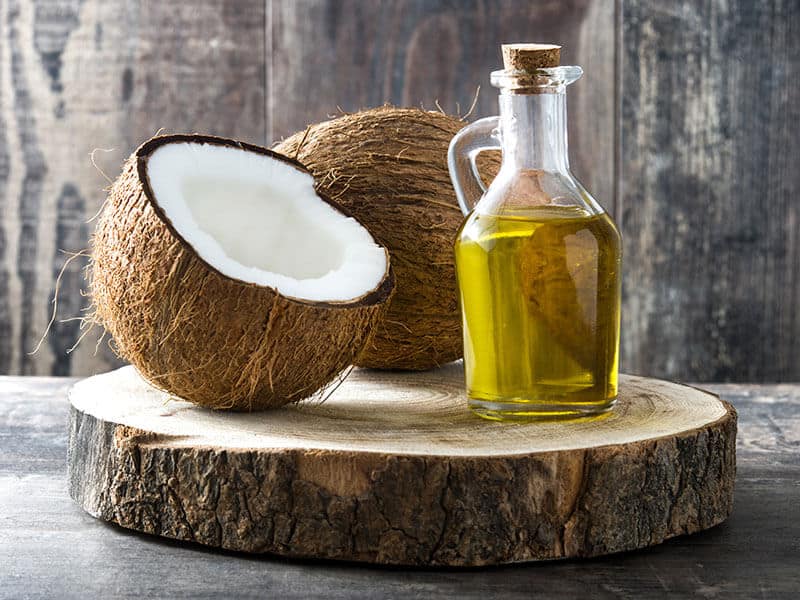
Coconut oil is another ideal stand-in for margarine, especially when used in cookies, cakes, and other sweet dish recipes.
There are two types of coconut oil: refined and unrefined. Although these two come with the same nutritional value, there is a noticeable difference in taste and smell.
While refined coconut oil is neutral in taste and smell, the unrefined (or pure) type is packed full of a distinct coconut flavor and aroma. Depending on your preference, this can either make or break a dish, so make sure to choose accordingly.
To use coconut oil as a margarine substitute, swap 1 cup of margarine for 1 cup of coconut oil.
Unsweetened Applesauce
For a fruit-based substitute, look no further than unsweetened applesauce. As the name implies, this condiment is made from apples, thus having all the health benefits of this nutritionally packed fruit.
Thanks to its tender texture and refreshing sweetness, apple sauce is perfect for sweet recipes that favor softness like muffins, cakes, bread, and brownies.
Do remember to use the unsweetened variation, though. You don’t want any extra sugar to over exaggerate the sweetness in your baked goods.
The only downside of apple sauce is that it’s not really suitable for baking crunchy treats such as biscuits or cookies. So it’s better to look to other alternatives if you plan to make those.
You can swap 1 cup of margarine for 1 cup of unsweetened applesauce. If you only have sweetened applesauce at hand, you can still use it but remember to reduce the amount to half.
Learn how to make unsweetened applesauce in this 4-minute video.
Cocoa Butter
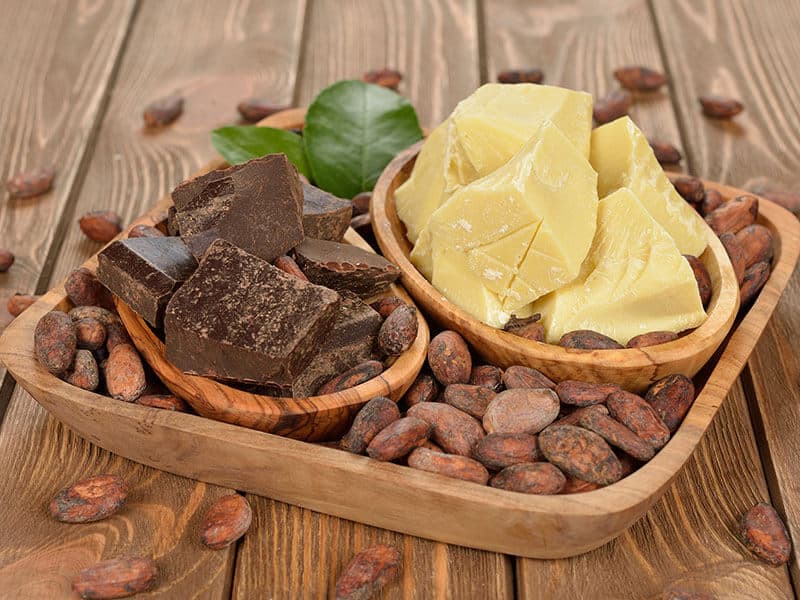
Cocoa butter is a type of plant-based fat that is made by separating the fat out of roasted and stripped cacao beans. Similar to coconut oil, there are two kinds of cocoa butter, unrefined and deodorized.
For cooking, you should always use the unrefined type since it still retains the chocolatey smell and taste that many people love. Add a little cocoa butter to your baking recipes, and you’ll be rewarded with a creamy texture and hints of delicious cocoa flavor.
To bring out the best in cocoa butter, you should use it for cooking sweet dishes such as cakes, brownies, and truffles. However, it also fits well in savory recipes.
For cocoa butter, a simple 1 to 1 ratio is enough to fulfill the role of margarine in any recipe.
Yogurt (Preferably Greek Yogurt)
If you don’t mind dairy products, then definitely consider using yogurt as a high protein, low calories stand-in for margarine in baking recipes. Not only does yogurt add richness to your dish, but it also makes the food more fulfilling, thanks to its high protein content.
Keep in mind that there are many types of yogurt; some tend to work better than others. For baking, I’d recommend using plain, full-fat, or fat-free Greek yogurt.
Some people might end up with a soggy cake when switching margarine for yogurt. This is because yogurt has more liquid content than margarine.
To prevent this from happening, you can use a filter to separate some of the water from your yogurt beforehand. Alternatively, you can increase the amount of flour used by ¼ or reduce other liquid ingredients in the recipe by ¼.
You can use the 1:1 ratio to replace yogurt with margarine.
You won’t have to buy Greek yogurt anymore after this instruction.
Avocado Oil

Apart from olive and coconut oil, avocado oil is one more healthy oil substitute for margarine. Avocado oil is famous for being a great source of vitamins C, B6, E, and K and contains a high percentage of good fat that will make you feel fuller for longer.
Simply put, avocado oil tastes basically similar to an avocado which is nutty and grassy. However, it is a little bit lighter in flavor.
When compared with the intense taste of olive oil, avocado oil is much milder. So if you’re not fond of the distinct olive taste but still want a plan-based oil in your cooking, this is an excellent choice.
With an incredibly high burning point of roughly 520F, avocado oil excels at high heat cooking techniques like frying, sauteing, baking, and roasting.
If you want to use avocado oil to replace margarine, you’ll need 1 cup of avocado oil for every cup of margarine.
Tofu
This might seem like an odd choice, but trust me on this. You can actually use tofu instead of margarine in most baking recipes.
No matter how you look at it, tofu is super healthy. It’s low in calories, packed full of protein, and consists of all the vital amino acids. In addition, it also provides your body with calcium, iron, phosphorus, and manganese.
Tofu has long been a reliable alternative to butter for lots of vegans, which in turn makes it suitable for replacing margarine. When mashed, tofu will have a creamy texture and a mild nutty taste with subtle hints of sweetness that will shine best in brownies baking.
1 cup of tofu should be enough for 1 cup of margarine.
You can see this video to know more:
Nut Butter
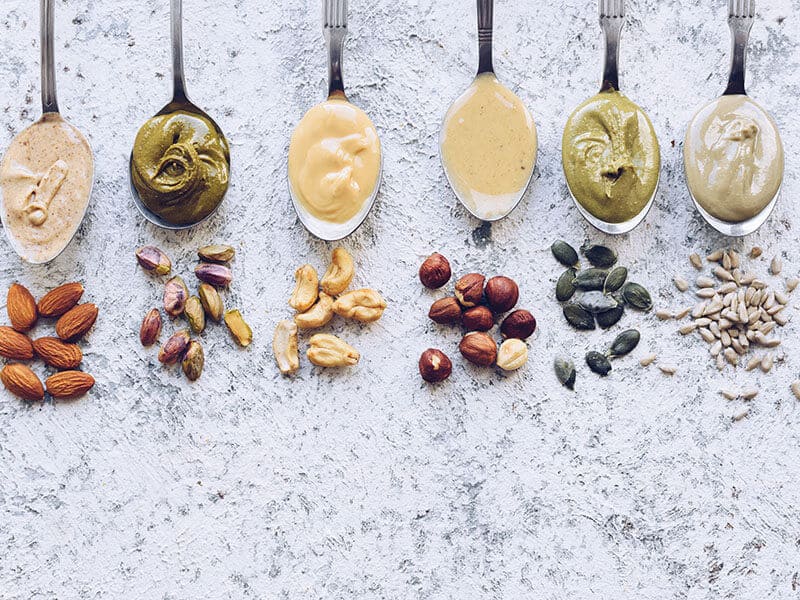
When it comes to nut butter, there are many solid options: peanut butter, almond butter, hazelnut butter, you name it. Even though each of them is unique in its own way, they all boast a rich, earthy, and mildly sweet flavor.
Nut butter works well for making sweet treats like cake, pancake, cookie, or smoothie. When used in place of margarine, it will elevate your dish with a buttery and slightly nutty flavor.
Also, don’t limit yourself to just popular types such as peanut or almond butter. There’s a world of tasty nut butter that you have to try.
In order to switch margarine for nut butter, you’ll need to mix your nut butter with oil in a 1:1 ratio to further bring out the fat content of butter. After that, you can replace 1 cup of this butter and oil mixture with 1 cup of margarine.
Another choice is to mix ½ nut butter with ½ margarine for taste testing. Depending on how you like (or don’t like) the flavor, you can change this ratio the next time.
Prune Puree
Prune puree works in the same way that applesauce does.
It is dark in color and has a strong and sweet flavor. Thanks to its natural color, prune puree is a solid choice for chocolate baked goods or any sweet dishes that have a dark color. It also finds great uses in strong and spicy tasting recipes like gingerbread.
Moreover, prune is high in nutritional content and is known for being a great baby food.
For prune puree, use 1 cup of it to replace 1 cup of margarine.
You can easily make prune puree at home with pitted prunes and a food processor.
Buttermilk
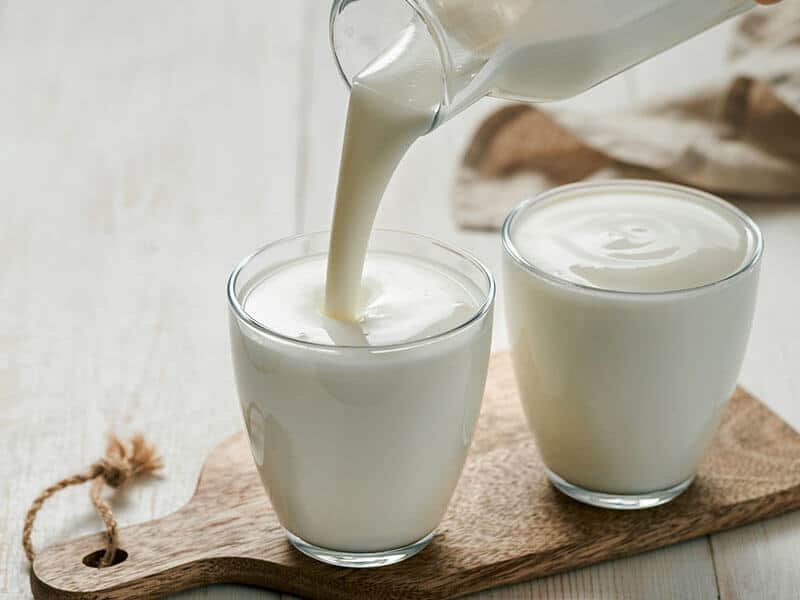
Similar to yogurt, buttermilk is a fermented milk product with a slightly tangy taste. It’s often used to make pancakes, muffins, quick bread, or biscuits.
You can utilize buttermilk for almost every baking recipe that calls for margarine. However, if you’re making something flaky such as pie crust, using buttermilk might change the texture so maybe look for another alternative.
To make buttermilk work as a margarine substitute, use 2 cups of buttermilk for every cup of margarine. You can also replace ⅛ cups (2 tablespoons) of margarine and 1 cup of milk with 1 cup of buttermilk when making baked goods.
No need to buy buttermilk since you can easily make it yourself at home!
Mashed Bananas Or Banana Puree
In addition to apples and prunes, bananas are another well-known fruit alternative to margarine for baked dishes.
Because bananas are quite strong in flavor, they can overwhelm other ingredients in mild-tasting treats. To counteract this, use mashed banana or banana puree in dishes with a robust and rich taste, like gingerbread or chocolate cake.
In addition, to bring out the best in bananas, avoid using them in crunchy or chewy recipes. Instead, utilize their naturally soft and dense texture for cakes, muffins, or quick bread.
For bananas, you’ll need to use about ½ or ¾ cup of banana puree in place of 1 cup of margarine and 1 cup of mashed banana for every cup of margarine.
If you’re trying to make banana puree at home, here’s a quick and simple guide.
Avocado Puree
Some people don’t like the taste of banana, if that’s the case for you then you can also use pureed avocado. As mentioned above, avocado has a mild, pleasant, and grassy taste which is perfect for turning into a puree.
You can utilize avocado puree in place of margarine for baking or use it as a spread for toasted bread. One big plus of this fruit puree is that it’s extremely healthy and packed full of essential nutrients.
To turn your pureed avocado into a margarine alternative, simply use the 1:1 ratio.
You’ll be surprised by how trouble-free it is to make some avocado puree. Watch this video:
Vegetable Oil

Vegetable oil comes from the seeds of plants and can be used as a great vegan-based margarine substitute for baking and spreading. Sunflower seed oil, palm oil, canola oil, and soybean oil are some of the popular types of vegetable oil.
The thing about vegetable oil is, it has a very light taste, especially when you compare it to olive or coconut oil. This can either be a good thing or a bad thing depending on your preference.
If you don’t want the oil to add any extra taste to the dish, then vegetable oil works just fine. However, if you’re looking for an extra kick in flavor, then maybe opt for another option.
To substitute margarine with vegetable oil, you can use a 1 to 1 ratio.
If You Want, You Can Even Make Margarine At Home!
Margarine, contrary to popular belief, is not that difficult to make at home. All you need are some vegetable fat, vegetable oil, milk with a little help of salt, and lemon juice.
The beautiful thing about homemade margarine is that you can choose whatever vegetable oil that you want. For example, if you’re a fan of coconut oil, you can make your margarine taste and smell a little bit more coconut-like!
A simple way to make margarine at your own house! See this video to know more:
FAQs
This section will provide you with the answers to some of the most frequently asked questions about margarine. To make sure that you won’t find yourself wondering the same things, make sure to give it a read.
Have You Found Your Favorite Alternative?
After reading through all 14 substitutes, I’m confident that you’ve been able to pick at least 1 or 2 for your next meal. As I’ve promised, you won’t need to waste time looking for the answer anywhere else!
If you have any more suggestions for margarine alternatives, please don’t be shy to share them in the comment. Also, don’t forget to give this post a like and share it if you like this content.
References
- Contributors to Wikimedia projects, (2003). Margarine – Wikipedia.
- FoodData Central [online]. FoodData Central.

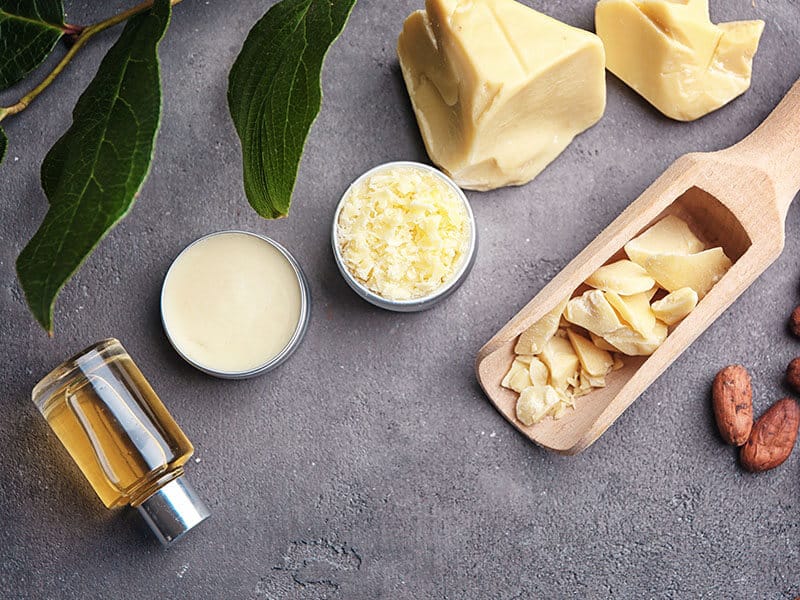
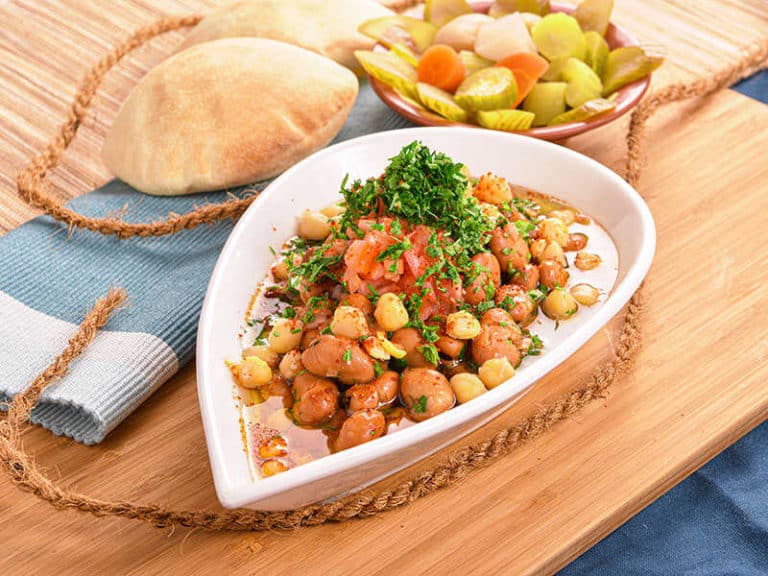


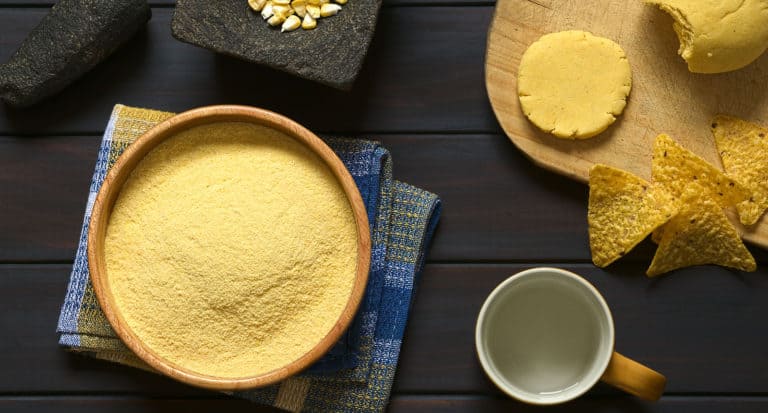

Amanda Collins
Founder and Senior Culinary Editor
Expertise
Culinary Arts and Management, Food Journalism and Critique, Recipe Development and Testing, Global Culinary Traditions, Sustainable Food Practices
Education
Institute of Culinary Education (ICE), New York, NY
Program: Diploma in Culinary Arts
Focus: Intensive hands-on training in culinary techniques, recipe development, and kitchen management, preparing students for professional roles in the culinary industry.
Monroe College, New Rochelle, NY
Program: Associate in Applied Science in Culinary Arts
Focus: Practical culinary skills, including cooking techniques, menu planning, and kitchen operations, with an emphasis on hands-on experience and industry standards.
Amanda Collins is a seasoned chef and food editor with a deep love for global flavors. Trained at the Institute of Culinary Education and Monroe College, and with over 15 years in the culinary field, Amanda has refined her skills in kitchens worldwide. Her background in food studies gives her a unique ability to share both recipes and the cultural stories that shape them.
As senior culinary editor at thebreslin.com, Amanda’s work brings authentic dishes to life, inviting readers to explore new flavors and techniques from around the globe. Her approachable style makes it easy for anyone to bring a bit of the world’s cuisine into their kitchen.